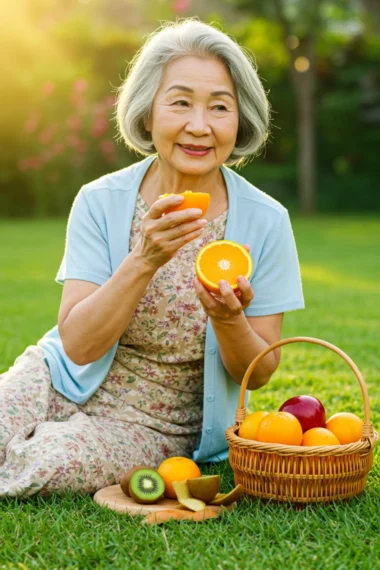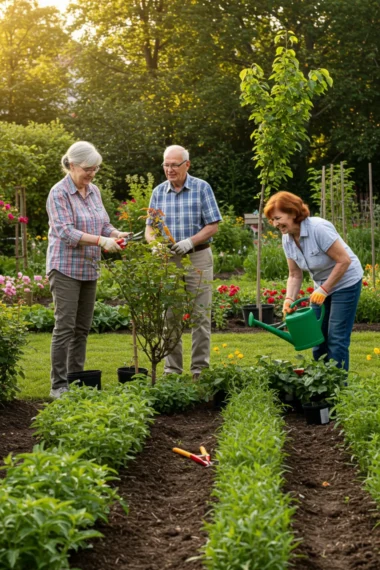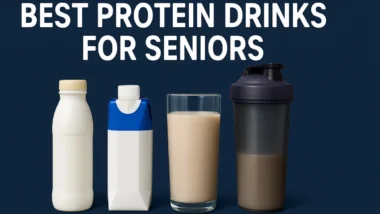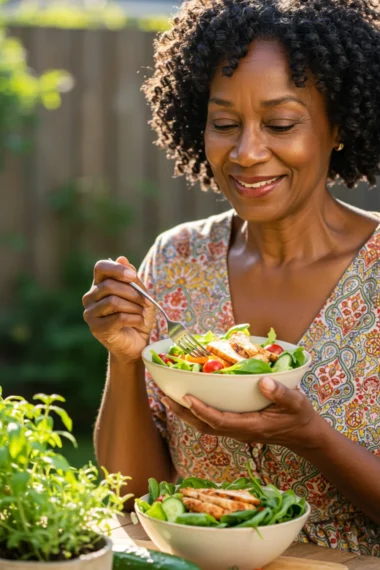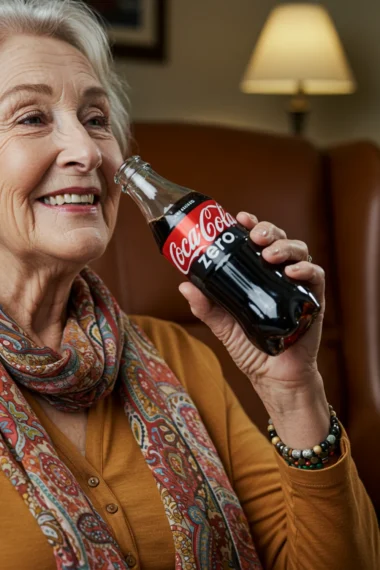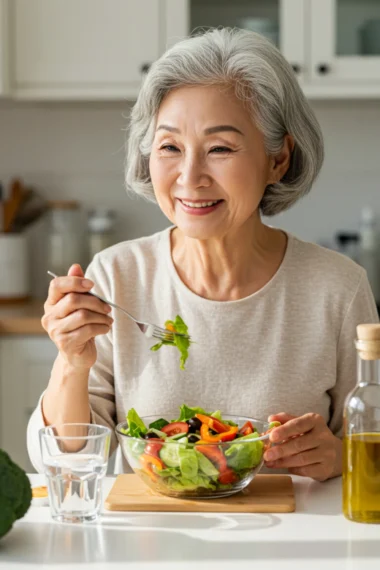Senior Center Lunch Menus: Nutritious Dining Options for Older Adults
According to the U.S. Department of Agriculture (USDA), adults aged 65 and older represent one of the fastest-growing population segments in the country, projected to reach 80 million by 2040. This demographic shift has prompted a national focus on senior nutrition, particularly in community-based programs that provide balanced, affordable meals every day. The Dietary Guidelines for Americans, 2020–2025, developed jointly by the USDA and the U.S. Department of Health and Human Services (HHS), emphasize nutrient-dense diets to support healthy aging and chronic disease management.
Senior centers—present in nearly every U.S. county—play a vital role in providing nutritious lunches that align with these guidelines. Through both congregate meal programs and home-delivered meal services, millions of older adults receive daily nourishment and, equally important, the companionship and connection that come from shared meals.
The Role and Importance of Senior Center Lunch Programs
Senior center lunch programs are more than dining services; they’re an essential part of public health infrastructure for older adults. These programs operate under the Older Americans Act (OAA) Nutrition Program, which was established in 1972 to reduce hunger, improve health outcomes, and promote social interaction among older adults.
1. Mission and Objectives
According to the Administration for Community Living (ACL), which oversees OAA nutrition services, the program’s objectives include:
- Reducing food insecurity and malnutrition among adults aged 60+
- Providing access to nutrition education and counseling
- Supporting disease prevention through diet
- Promoting socialization and mental well-being
Each year, over 900,000 seniors participate in congregate meal programs, and more than 247 million meals are served nationwide.
2. Types of Senior Meal Services
Senior meal programs generally operate under two main models:
- Congregate Meals: Served at senior centers, churches, or community facilities where participants can eat together.
- Home-Delivered Meals: Commonly known as Meals on Wheels, these services bring nutritious food directly to the homes of those who are homebound.
Both models aim to meet one-third of the daily Recommended Dietary Allowance (RDA) for nutrients in each meal, as required by federal standards.
3. Impact on Health and Longevity
Regular participation in senior center lunch programs has been associated with:
- 25% lower rates of malnutrition (National Resource Center on Nutrition and Aging, 2022)
- 15% reduced risk of hospitalization among older adults with chronic illnesses
- Improved medication adherence due to consistent meal patterns
- Enhanced cognitive function, particularly when paired with social interaction during meals
A study published by the National Institutes of Health (NIH) found that seniors who participated in community meal programs reported higher energy levels, better mobility, and fewer depressive symptoms than those who did not.
Nutritional Guidelines for Older Adults
Designing senior center lunch menus requires adherence to strict nutritional guidelines developed by the USDA, HHS, and Centers for Disease Control and Prevention (CDC).
1. Key Nutrient Requirements
Older adults require fewer calories but higher nutrient density to support metabolism, muscle retention, and immune health.
| Nutrient | Daily Recommended Amount | Function |
|---|---|---|
| Protein | 46g (women) / 56g (men) | Maintains muscle mass, repairs tissues |
| Fiber | 25g (women) / 30g (men) | Supports digestion, heart health |
| Calcium | 1,200 mg | Strengthens bones, reduces fracture risk |
| Vitamin D | 800 IU | Improves calcium absorption, immune defense |
| Potassium | 2,600–3,400 mg | Regulates blood pressure |
| B Vitamins | Varies | Supports energy metabolism, brain function |
| Sodium | <1,500 mg | Prevents hypertension |
2. Caloric Range for Senior Lunches
According to USDA Food and Nutrition Service (FNS) standards, each senior lunch meal should provide:
- 500–700 calories, based on age, gender, and activity level
- At least 33% of the RDA for essential nutrients if one meal is served daily
- Balanced macronutrients:
- 20–30% protein
- 45–55% carbohydrates
- 25–30% healthy fats
3. Common Nutritional Challenges Among Seniors
Nutritional deficiencies often result from reduced appetite, dental issues, medication interactions, or financial limitations. The most common deficiencies include:
- Vitamin D and Calcium – leading to osteoporosis and muscle weakness
- Vitamin B12 – causing fatigue, nerve issues, and cognitive decline
- Iron – resulting in anemia and reduced oxygen transport
- Protein – linked to muscle wasting (sarcopenia)
Senior center meals are specifically designed to address these deficiencies by incorporating fortified foods, lean proteins, and fiber-rich options.
The Menu Planning Process
Creating a senior center lunch menu isn’t just about food variety—it’s a science guided by federal and state regulations, dietetic expertise, and cultural preferences.
1. Role of Registered Dietitians
Under the Older Americans Act, all meal plans must be reviewed and approved by a Registered Dietitian Nutritionist (RDN). These professionals ensure that menus meet the nutritional standards set by the USDA Dietary Guidelines and reflect seasonal, regional, and cultural diversity.
2. Key Principles in Menu Planning
When planning senior meals, dietitians consider:
- Nutrient adequacy (meeting RDAs and caloric needs)
- Variety and color balance (to encourage appetite)
- Ease of chewing and digestion
- Low-sodium and low-fat preparation methods
- Portion control (to prevent over- or under-eating)
Menus often use texture-modified diets for individuals with dysphagia (difficulty swallowing), ensuring safe and enjoyable meals.
3. Sample Menu Components
A balanced senior center lunch typically includes:
- Main Entrée: Lean protein (chicken, fish, tofu, turkey)
- Side Dishes: Whole grains (brown rice, barley, quinoa) and steamed vegetables
- Fruit or Dessert: Fresh or canned fruit in juice, or low-sugar pudding
- Beverage: 1% milk, water, or herbal tea
- Condiments: Low-sodium dressings and sauces
One-Day Senior Center Lunch Menu
| Course | Menu Item | Nutritional Highlights |
|---|---|---|
| Entrée | Herb-Roasted Chicken Breast | 30g protein, low fat |
| Side 1 | Steamed Green Beans with Olive Oil | High fiber, heart-healthy fats |
| Side 2 | Brown Rice Pilaf | Whole grain carbohydrates |
| Fruit | Fresh Peach Slices | Vitamin C, antioxidants |
| Beverage | 1% Milk | Calcium, Vitamin D |
Each serving provides approximately 650 calories, 25g protein, 20g fat, and 75g carbohydrates, meeting one-third of daily nutritional needs for seniors.
Special Diet Considerations for Older Adults
A key strength of senior center lunch programs is their ability to accommodate individual dietary needs. According to the Centers for Disease Control and Prevention (CDC), nearly 80% of adults over 65 live with at least one chronic condition—most commonly hypertension, diabetes, or cardiovascular disease. Meal plans must, therefore, address these realities while ensuring meals remain flavorful and satisfying.
1. Heart-Healthy Menus
To support cardiovascular wellness, dietitians design menus low in saturated fat, trans fats, and sodium, and rich in omega-3 fatty acids, fiber, and potassium.
Example Menu for Heart Health:
- Entrée: Baked salmon with lemon-dill sauce
- Sides: Steamed broccoli, quinoa with olive oil
- Fruit: Fresh orange segments
- Beverage: Unsweetened iced tea or water
This combination provides about 630 calories with less than 2 grams of saturated fat and 500 mg sodium, aligning with American Heart Association (AHA) standards.
2. Diabetic-Friendly Menus
For seniors managing diabetes, menus emphasize:
- Complex carbohydrates (whole grains, beans, vegetables)
- Low-glycemic fruits (berries, apples, pears)
- Controlled portion sizes
Example Diabetic-Friendly Lunch:
- Entrée: Grilled turkey burger on whole-grain bun
- Sides: Sweet potato wedges and spinach salad
- Dessert: Baked apple with cinnamon
- Beverage: Water with lemon
This meal contains 60g carbohydrates, balanced with lean protein and fiber to maintain stable blood glucose.
3. Low-Sodium Menus
Excess sodium intake contributes to hypertension, a leading concern for older adults. Senior center menus typically limit sodium to less than 1,200 mg per meal, using natural flavor enhancers like herbs, citrus, and spices instead of salt.
Example Low-Sodium Menu:
- Entrée: Chicken stew with herbs and root vegetables
- Sides: Brown rice, mixed green salad
- Fruit: Sliced melon
- Dessert: Vanilla yogurt
- Beverage: Unsalted vegetable broth
4. Vegetarian and Vegan Options
Many senior centers now offer plant-based meals, recognizing that vegetarian diets can help lower cholesterol, improve digestion, and support heart health.
Example Vegetarian Menu:
- Entrée: Lentil loaf with tomato glaze
- Sides: Roasted carrots and mashed cauliflower
- Fruit: Fresh strawberries
- Beverage: Almond milk
A balanced vegetarian meal like this provides 25–30g protein, comparable to meat-based dishes.
5. Texture-Modified and Allergen-Free Diets
For seniors with swallowing difficulties (dysphagia), dietitians prepare soft, minced, or pureed meals without compromising taste or nutrition.
Meals are also adapted for those with food allergies (e.g., gluten, nuts, or dairy) using certified allergen-free ingredients.
Learn More: Free Walk-in Showers for Seniors: Eligibility, Grants & Application Steps
Sample Weekly Senior Center Lunch Menu
To illustrate the variety and nutritional balance of senior dining programs, here’s a realistic five-day sample menu that could be implemented at a U.S. senior center, designed to meet USDA guidelines.
| Day | Main Entrée | Sides | Fruit/Dessert | Beverage | Calories |
|---|---|---|---|---|---|
| Monday | Lemon baked tilapia | Brown rice, steamed carrots | Pear slices | 1% milk | 650 |
| Tuesday | Turkey meatloaf | Mashed potatoes, green beans | Apple crisp | Herbal tea | 680 |
| Wednesday | Chicken stir-fry | Jasmine rice, broccoli | Mandarin oranges | Water | 620 |
| Thursday | Beef stew with vegetables | Whole wheat roll | Banana | Skim milk | 700 |
| Friday | Veggie lasagna | Garden salad with vinaigrette | Peach cup | Low-fat milk | 660 |
Each meal provides approximately one-third of the RDA for protein, fiber, vitamins, and minerals.
Incorporating Cultural and Regional Diversity in Menus
The U.S. senior population is increasingly diverse. According to the U.S. Census Bureau, by 2030, 1 in 5 older adults will be of Hispanic, Asian, or African American heritage. Senior centers are evolving to reflect this diversity through culturally inclusive menu offerings.
1. Culturally Tailored Menus
Nutritionists collaborate with community leaders to ensure menus honor both health standards and traditional food preferences.
Examples:
- Hispanic-Inspired Menu:
- Chicken enchiladas with salsa verde
- Spanish rice and pinto beans
- Fresh pineapple and herbal tea
- Asian-Inspired Menu:
- Teriyaki-glazed tofu
- Steamed jasmine rice and bok choy
- Mandarin orange slices
- Southern-Style Comfort Menu:
- Oven-fried chicken (baked, not fried)
- Collard greens and cornbread muffin
- Fresh peach slices
2. Balancing Cultural Authenticity with Nutrition
Cultural foods can sometimes be high in sodium, sugar, or fat. Senior center dietitians modify recipes using:
- Whole grains instead of white flour
- Low-fat dairy alternatives
- Spices for flavor enhancement
- Healthy cooking methods (baking, grilling, steaming)
For example, traditional fried catfish may be prepared using air-frying technology, preserving flavor while reducing oil by 70%.
3. Encouraging Participation Through Familiar Foods
Studies by the National Resource Center on Nutrition and Aging show that meal participation increases by 20% when familiar cultural dishes are included. Familiarity not only encourages eating but also fosters a sense of belonging, especially for immigrant seniors or those living far from family.
Dietary Education and Counseling at Senior Centers
Many senior centers extend beyond meal service by providing nutrition education and wellness programs.
1. Nutrition Workshops and Counseling
Workshops are often held monthly to educate seniors on topics such as:
- Reading nutrition labels
- Managing portion sizes
- Reducing added sugars and sodium
- Hydration and healthy beverages
Registered Dietitians offer individual counseling sessions to tailor meal plans for those managing specific conditions like diabetes or kidney disease.
2. Cooking Demonstrations and Community Involvement
Interactive cooking demos teach seniors how to prepare simple, balanced meals at home. These sessions also encourage peer engagement and skill-building.
For example, a “Cooking for One” workshop might feature:
- Meal prepping techniques
- Safe food storage tips
- Simple recipes with affordable ingredients
Participants often receive printed recipes and nutritional handouts to take home.
Hydration: The Often-Overlooked Nutrient
Dehydration is a common and serious risk for older adults. The National Institute on Aging (NIA) reports that seniors experience a reduced sense of thirst with age, leading to fatigue, confusion, and kidney issues.
Senior center lunch menus now integrate hydration strategies, such as:
- Serving water or unsweetened beverages with every meal
- Including high-water-content foods (soups, fruits, and vegetables)
- Offering flavored water with cucumber, mint, or citrus to make hydration appealing
On average, older adults should consume at least 2 liters of fluids daily, including both beverages and moisture-rich foods.
Food Safety and Sanitation Standards in Senior Centers
For older adults, foodborne illness poses a greater risk due to age-related immune decline. According to the Centers for Disease Control and Prevention (CDC), adults aged 65 and older account for nearly half of all hospitalizations related to foodborne diseases each year. Ensuring the safety and quality of every meal served in senior centers is, therefore, an absolute priority.
1. Federal and State Food Safety Guidelines
All senior center meal programs receiving federal funding under the Older Americans Act (OAA) must comply with food safety standards established by:
- U.S. Food and Drug Administration (FDA) Food Code
- USDA Food Safety and Inspection Service (FSIS)
- State and local health department regulations
These regulations cover everything from safe storage and temperature control to employee hygiene practices and equipment sanitation.
2. Key Food Safety Practices
Senior centers typically implement the following food safety measures:
- Temperature Control:
Hot foods are maintained at ≥140°F (60°C), while cold foods are kept below 40°F (4°C). - Hand Hygiene:
Food handlers wash hands for at least 20 seconds before and after handling food. - Cross-Contamination Prevention:
Separate cutting boards and utensils are used for raw meats, vegetables, and ready-to-eat items. - Proper Food Storage:
Perishable items are labeled with preparation dates and rotated using the “first in, first out” (FIFO) method. - Sanitization:
Kitchens are sanitized with food-safe disinfectants before and after each meal service.
3. Nutrition and Food Safety Training
Many centers require all food service staff and volunteers to complete ServSafe or State-Approved Food Handler Certification programs.
Ongoing training ensures that foodborne illness prevention remains an active, daily practice.
4. Food Delivery Safety for Home-Delivered Meals
For programs like Meals on Wheels, maintaining food temperature and quality during transport is vital. Meals are:
- Sealed in insulated containers
- Delivered within two hours of preparation
- Monitored using temperature logs
Drivers are trained to spot signs of spoilage and to ensure that recipients promptly refrigerate any leftovers.
The Role of Volunteers and Staff in Senior Nutrition Programs
Behind every nutritious lunch is a team of dedicated professionals and volunteers working together to create safe, enjoyable, and meaningful dining experiences for seniors.
1. Key Roles and Responsibilities
| Role | Primary Duties |
|---|---|
| Registered Dietitian (RDN) | Designs menus, oversees nutrition compliance, and conducts dietary assessments |
| Food Service Manager | Manages kitchen operations, procurement, and food safety |
| Chef/Cook | Prepares and portions meals according to approved menus |
| Volunteer Coordinator | Organizes volunteer schedules, training, and recognition |
| Meal Delivery Driver | Delivers home meals and conducts brief wellness checks |
| Center Director | Oversees program operations, funding compliance, and community outreach |
2. Importance of Volunteers
Volunteers are the backbone of many senior nutrition programs. According to Meals on Wheels America, more than 2 million volunteers assist with meal preparation, delivery, and companionship visits each year.
Their contributions go beyond food delivery—they often provide emotional support, friendly conversation, and safety monitoring for isolated seniors.
3. Training and Certification
Volunteers receive training in:
- Safe food handling
- Elder sensitivity and confidentiality
- Emergency response (e.g., recognizing signs of distress)
- Nutrition awareness
Such training ensures volunteers can confidently interact with participants while upholding program standards.
Community and Emotional Benefits of Shared Meals
While nutrition remains the core focus, the social and emotional value of communal dining cannot be overstated. Eating together at senior centers fosters connection, combats loneliness, and supports mental well-being.
1. Combating Social Isolation
According to the National Institute on Aging (NIA), more than one-fourth of Americans aged 65 and older live alone, and chronic loneliness is linked to a 29% increase in heart disease and a 32% rise in stroke risk.
Senior center lunches provide a daily opportunity for conversation and connection. Sharing meals encourages seniors to form friendships, discuss life experiences, and maintain a sense of purpose.
“Eating with others isn’t just enjoyable—it’s medicine for the mind and heart.”
— Dr. Linda Fried, Columbia University Mailman School of Public Health
2. Activities That Complement Lunch Programs
Many centers integrate social and recreational activities around mealtime, such as:
- Group exercise or yoga classes
- Art therapy and crafts
- Music or dance sessions
- Educational seminars on health and finance
By combining nutrition with physical and mental engagement, these centers address multiple dimensions of healthy aging.
3. The Psychological Value of Meal Routines
A consistent meal schedule provides comfort and predictability. Seniors benefit from knowing they’ll enjoy:
- Nutritious food
- Friendly faces
- A safe, welcoming environment
Regular attendance at senior lunches has been shown to reduce depressive symptoms by up to 35%, according to a 2022 study published in the Journal of Gerontological Social Work.
Funding and Policy Support: The Older Americans Act
The Older Americans Act (OAA) remains the cornerstone of senior nutrition services in the United States.
1. Overview of the OAA Nutrition Program
The OAA Nutrition Program, established in 1972, provides funding for:
- Congregate Meals (served in centers)
- Home-Delivered Meals
- Nutrition Education and Counseling
The program is managed by the Administration for Community Living (ACL) under the U.S. Department of Health and Human Services (HHS).
Each state receives federal grants, which are distributed to Area Agencies on Aging (AAAs). These agencies oversee local implementation and coordinate with community partners.
2. Funding Allocation and Impact
In FY 2023, over $1.1 billion in federal funding supported the OAA Nutrition Program.
The program serves:
- 247 million meals annually
- Over 5,000 local providers nationwide
- 2.4 million older adults, many of whom live on limited incomes
Beyond meal provision, the program also supports health screenings, social services referrals, and nutrition education.
3. Partnership with Nonprofit and Private Organizations
Public-private collaboration amplifies the impact of senior nutrition programs. Organizations such as:
- Meals on Wheels America
- Feeding America
- AARP Foundation
- Local churches and community nonprofits
… partner with federal and state agencies to extend meal reach, secure donations, and recruit volunteers.
Technology and Innovation in Senior Meal Programs
Modern senior centers are increasingly integrating technology to improve efficiency, reduce waste, and enhance the dining experience.
1. Digital Menu Planning and Tracking
Many facilities now use nutrition management software to:
- Track nutrient values of meals
- Generate compliance reports for OAA funding
- Manage inventory and food costs
Popular systems include NutriSource, MealSuite, and CBORD Nutrition Management, which allow dietitians to instantly analyze menu adequacy against USDA standards.
2. Mobile Apps and Online Scheduling
Some senior centers have implemented mobile-friendly apps that let participants:
- View weekly menus
- Reserve meals in advance
- Notify staff of dietary restrictions
This level of convenience reduces food waste and improves participation consistency.
3. Smart Kitchen Equipment
Modern kitchens utilize:
- Temperature sensors for food safety monitoring
- Energy-efficient appliances to lower operational costs
- Portion control scales to maintain consistency
These innovations ensure every meal is prepared safely, accurately, and sustainably.
Evaluating the Effectiveness of Senior Nutrition Programs
Ensuring that senior center lunch menus meet their intended goals—nutritional adequacy, health improvement, and social engagement—requires systematic evaluation. Federal and state agencies regularly assess outcomes using both quantitative metrics (nutrient intake, participation rates) and qualitative feedback (surveys, interviews, focus groups).
1. Performance Metrics
The Administration for Community Living (ACL) evaluates program success through multiple indicators:
- Nutrient Quality: Meals must meet at least one-third of the Dietary Reference Intakes (DRIs).
- Participation Levels: Consistent attendance and engagement at congregate meal sites.
- Health Outcomes: Monitoring weight stability, disease management, and hospital admissions.
- Client Satisfaction: Feedback surveys measuring taste, variety, and perceived health benefits.
According to the ACL’s National Survey of Older Americans Act Participants (2023):
- 86% of participants said meals improved their health.
- 83% reported eating healthier at home due to nutrition education.
- 77% felt less lonely after joining a meal program.
2. Dietary Quality Assessment
Dietary quality is often measured using the Healthy Eating Index (HEI)—a scoring system developed by the USDA and the National Cancer Institute.
Average HEI scores for congregate meal participants are 15–20% higher than for nonparticipants, reflecting better compliance with national dietary guidelines.
3. Ongoing Program Improvements
Findings from these assessments drive menu revisions and program upgrades. For instance:
- Increased use of whole grains after fiber deficiency findings.
- Reduced sodium levels following hypertension trend analysis.
- Expanded ethnic food options in diverse communities.
Continuous improvement keeps programs responsive to evolving dietary needs and demographic trends.
Challenges Faced by Senior Centers
Despite their impact, senior nutrition programs face ongoing challenges in funding, staffing, and adapting to modern dietary and operational demands.
1. Funding Limitations
While OAA funding provides a backbone for senior meal programs, resources often fall short of growing demand.
According to Meals on Wheels America’s 2024 report:
- 83% of local programs maintain a waiting list.
- 60% of programs rely on private donations to meet food costs.
- Inflation and rising food prices have increased average meal costs by 12% since 2020.
2. Staff Shortages and Volunteer Fatigue
The sustainability of these programs depends heavily on volunteers and part-time staff.
Post-pandemic, many centers experienced:
- Fewer volunteer drivers
- Increased delivery distances in rural areas
- Higher staff turnover due to burnout
Some centers now offer stipends or fuel reimbursements to retain volunteers.
3. Transportation Barriers
For rural or mobility-limited seniors, transportation remains a major hurdle. Lack of reliable transport often results in lower participation at congregate meal sites.
To address this, several centers partner with local transit authorities or rideshare programs to provide free or low-cost shuttle services for seniors.
4. Food Supply Chain and Cost Pressures
Rising costs of meat, dairy, and produce have forced centers to innovate.
Many now source locally through farm-to-senior initiatives—direct partnerships with local farms that provide fresh produce at reduced prices.
Example: In Oregon, the Farm Direct Nutrition Program helps senior centers purchase seasonal produce while supporting regional agriculture.
5. Technology Gaps
While digital tools streamline operations, not all centers have the budget or technical expertise to adopt them.
Bridging this gap through federal technology grants could significantly enhance efficiency in menu planning and data tracking.
Case Studies from Across the United States
To better understand how these programs function at a community level, let’s examine real-life examples of successful senior nutrition initiatives.
1. Case Study 1: The New York City Department for the Aging (DFTA)
The DFTA oversees over 200 senior centers across New York City, serving more than 10 million meals annually.
Highlights:
- Offers diverse menus including Caribbean, Chinese, and Italian cuisines.
- Nutritionists evaluate each meal using HEI standards.
- Partners with City Harvest and Food Bank for New York City to reduce food waste and redistribute excess meals.
Results:
A 2023 evaluation showed a 17% increase in senior participation and a 21% improvement in self-reported dietary satisfaction.
2. Case Study 2: Meals on Wheels San Diego County, California
Serving over 4,500 clients daily, this program emphasizes home-delivered meals and friendly visits for homebound seniors.
Unique Features:
- Nutritionist-designed menus with diabetic and renal-friendly options.
- Meals prepared fresh daily and delivered within two hours.
- Integration of pet food delivery to support companion animal care.
Results:
Client surveys show that 93% feel safer at home knowing someone checks on them daily, while 88% report improved appetite due to consistent meal timing.
Collaborations Between Healthcare and Senior Nutrition Programs
A growing trend in senior care involves linking nutrition services with healthcare systems to improve long-term outcomes.
1. Nutrition as Preventive Medicine
Hospitals and health networks increasingly recognize that malnutrition contributes to longer hospital stays and higher readmission rates.
Collaborations now enable:
- Physicians to refer patients directly to senior meal programs.
- Dietitians to share nutrition reports through secure data platforms.
- Insurance plans (like Medicare Advantage) to offer meal delivery benefits after hospital discharge.
2. Example: Kaiser Permanente & Meals on Wheels Partnership
Kaiser Permanente’s 2022 pilot program in California connected discharged patients to two weeks of home-delivered meals.
Results showed:
- 30% reduction in readmission rates.
- Improved adherence to dietary guidelines for hypertension and diabetes.
3. Community Health Screenings
Many senior centers now host:
- Blood pressure checks
- Cholesterol and glucose screenings
- Nutrition counseling days
These preventive efforts allow early detection of health issues and immediate referral to appropriate care.
How Families and Caregivers Can Support Senior Nutrition?
While senior centers provide essential services, families and caregivers play a vital complementary role in maintaining nutritional health at home.
1. Encouraging Healthy Eating Habits at Home
Caregivers can reinforce good habits by:
- Offering smaller, nutrient-rich meals throughout the day.
- Using herbs and spices instead of salt.
- Preparing soft-textured foods for easier chewing and swallowing.
- Encouraging hydration through soups, smoothies, and water-rich fruits.
2. Coordinating with Senior Centers
Families can communicate with center staff or dietitians about:
- Food allergies or medical conditions.
- Transportation needs.
- Availability of special meals for holidays or medical recovery periods.
Such collaboration ensures continuity of care and helps staff tailor meals to each participant’s health profile.
3. Addressing Emotional Eating and Appetite Changes
Changes in appetite may indicate depression, medication effects, or loneliness. Regular conversations about eating habits can help detect issues early.
If a senior refuses food often, caregivers should consult both a registered dietitian and a primary care physician.
Measuring Success: What Makes a “Good” Senior Center Lunch Menu?
A successful senior lunch program balances taste, nutrition, and dignity. Based on federal standards and research findings, the hallmarks of an excellent menu include:
- Nutritional Balance: Meets at least one-third of daily nutrient requirements.
- Cultural Relevance: Reflects participants’ backgrounds and food traditions.
- Safety: Follows USDA and FDA food safety codes.
- Accessibility: Serves both mobile and homebound individuals.
- Sustainability: Reduces waste and promotes local sourcing.
- Engagement: Encourages social participation and feedback.
When these elements converge, senior meal programs not only feed bodies but also nourish lives.
Final Thought
Senior center lunch programs embody one of society’s most compassionate missions—ensuring that every older adult can age with dignity, health, and community.
They represent not just a plate of food, but a daily act of care and inclusion.
As America’s senior population continues to grow, investing in these programs will become increasingly crucial. With strong policy support, innovative menu planning, and committed volunteers, the future of senior nutrition can be both healthy and hopeful.
“The measure of a community’s strength is how it treats its oldest members.” — Eleanor Roosevelt
By continuing to nourish our elders, we sustain not only their lives—but the values and wisdom that define us as a nation.
FAQs
Who is eligible to receive meals at senior centers?
Adults aged 60 and older, along with their spouses or disabled dependents, are eligible for meals under the Older Americans Act Nutrition Program. Priority is often given to individuals with low incomes or those who are socially isolated.
How much does it cost to eat at a senior center?
Most meals are provided at no set cost; participants are invited to contribute a voluntary donation (typically $2 to $5 per meal), helping sustain the program.
Can I receive special diet meals (like diabetic or low-sodium)?
Yes. Senior centers employ Registered Dietitians (RDNs) who design menus to accommodate various medical and dietary needs, including heart-healthy, diabetic, renal, and vegetarian options.
What is the difference between congregate and home-delivered meals?
Congregate Meals: Served at senior centers or community spaces, encouraging socialization.
Home-Delivered Meals: Prepared fresh and delivered to homebound seniors, ensuring nutrition and safety checks.
Are senior center lunches healthy?
Absolutely. Each meal is planned according to USDA dietary guidelines, focusing on balanced portions of lean proteins, whole grains, fruits, vegetables, and low-fat dairy.
How can I find a senior center near me?
You can locate programs through the Eldercare Locator, a federal resource managed by the Administration for Community Living (ACL). Visit eldercare.acl.gov or call 1-800-677-1116.
Do these programs include nutrition education?
Yes. Many centers offer nutrition classes, cooking demonstrations, and one-on-one counseling to help seniors make informed food choices at home.



